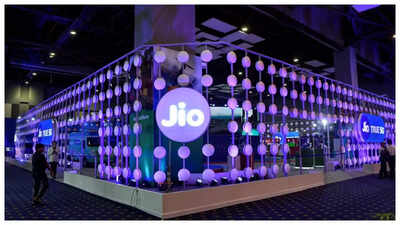Key Takeaways
- Airtel and Jio to nearly double capital returns by 2028
- Network spending now below depreciation, unlocking strong cash flows
- Free cash flow surge to support debt reduction and dividends
Bharti Airtel and Reliance Jio are set to nearly double their returns on capital employed by 2028, according to a new ICICI Securities report. This financial turnaround comes after 15 years of heavy infrastructure investment, with network spending now falling below depreciation costs, unlocking robust cash flows for both telecom giants.
Entering the Value Creation Zone
The report highlights that both companies are entering a “value creation zone,” with Airtel’s return on capital employed (RoCE) expected to surge from 14.2% in FY25 to 28.4% by FY28. Jio Platforms’ RoCE is projected to rise from 14.3% to 21.4% over the same period. This shift follows reduced capital expenditure compared to depreciation, enabling stronger free cash flows that will support debt reduction and dividend payouts.
Jio’s Growth Trajectory and IPO Plans
Reliance Jio, preparing for an initial public offering in early 2026, is forecasted to reach a valuation of $148 billion by September 2027. Its free cash flow is expected to triple to Rs 558 billion by FY28, driven by stable tariffs and strong 5G adoption. Jio has already achieved 46.2% 5G penetration among its 507 million subscribers, capturing 65-70% of India’s 5G user base. The company’s shift to higher-priced unlimited 5G plans, offering at least 2GB daily data, is boosting tariffs by 17-30% compared to 4G plans.
Airtel’s Strategic Positioning
Airtel is also benefiting from its strategic focus on 5G and stable pricing. FY26 marks a pivotal year for Airtel, with depreciation and amortization surpassing capex, leading to free cash flow exceeding net profit. This will accelerate debt reduction and potentially increase dividend payouts. Airtel’s total investment from FY12-25, including Rs 2,135 billion in capex and Rs 1,550 billion in spectrum, has laid the groundwork for this financial turnaround.
Beyond Mobile: New Revenue Streams
Both companies are expanding beyond traditional mobile services. Fixed broadband revenue is projected to grow at a 15.4% compound annual rate through FY30, reaching Rs 522 billion industry-wide. High-margin enterprise digital services, such as and , are also driving growth. Airtel’s home and enterprise segments are expected to grow at 29% annually through FY28, far outpacing its 6.3% growth in traditional mobile services.
From Capital Destruction to Value Creation
The report characterizes FY12-20 as a period of “capital destruction” for Indian telcos, marked by low returns due to costly spectrum auctions and intense competition. FY21-25 represented “value protection,” with returns matching costs amid continued investment. The upcoming FY26-28 period is dubbed the era of “value creation,” as Airtel and Jio finally capitalize on their massive investments to boost profitability.
For Airtel, FY25 marked a milestone with capex, including spectrum, at Rs 266 billion, below depreciation of Rs 283 billion. Over FY26-28, its estimated capex of Rs 531 billion will remain significantly lower than depreciation of Rs 827 billion, further enhancing free cash flow. Jio Platforms is expected to see its EBITDA grow at 18.1% annually to Rs 1,057 billion by FY28, with profit after tax rising at 21.1% annually.




